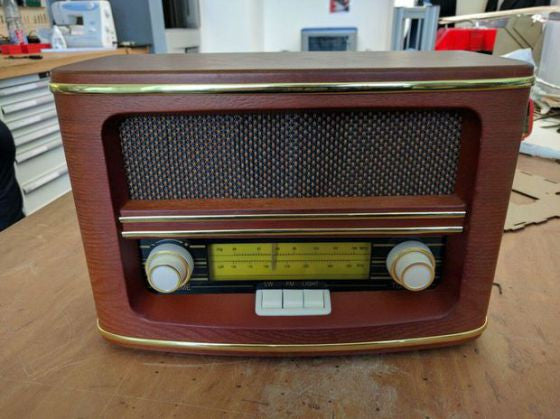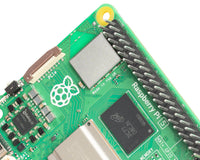
Raspberry Pi Roundup - 5th September 2016
Riddle me this...

Designed to be part of an ‘escape room’, the Retro Radio Riddle is a retro radio set with it’s insides taken out and replaced with a Raspberry Pi and some custom circuitry. As the user twists the dial, they find riddles hidden inside the white static noise and solve them using the three buttons on the front of the set. Once all the riddles have been solved, a secret compartment pops open to reveal the next ‘clue’ or perhaps a key. Read more about this intriguing device over at Instructables.
DIY Laptop

Raspberry Pi laptops are somewhat of a holy grail for Pi users. You can, of course, just buy a Pi Top and build it from their kit. Or, alternatively you could go the DIY route as Instructables user Prosnow22 has done. He’s taken a Raspberry Pi, the official touch screen, a Rii keyboard and a lot of 3D-printed parts and made his own. You can see how he did it here.
Simple Electronics

The Raspberry Pi Foundation and The MagPi have announced the launch of another in their Essentials series of books. This one is called Simple Electronics with GPIO Zero and focuses on teaching the reader how to use simple electronic components to affect and detect the real world, using the GPIO Zero Python library. We’re dead chuffed that they mention the CamJam EduKits several times! There are 12 chapters to the book:
- Program LED lights
- Add a push button to your project
- Build a motion sensing alarm
- Create your own distance rangefinder
- Make a laser-powered tripwire
- Build a Raspberry Pi robot
- and much more
and you can download it now, for free, from the MagPi website (the PDF link is on the right hand side) or buy it via the Apple App Store and Google Play. Ben Nuttall, co-developer of the Python library, said that it would soon be available in print, too, so there are multiple options for you.
Weather station

Brian Masney has taken a Raspberry Pi Zero and hooked up a load of sensors to create a weather station. He has fixed solar panels to the top for power and the sensors include ones for wind speed and direction, rain, temperature, pressure, and dew point. He’s using the popular BMP180 for some of these plus an MCP3008 analog-to-digital converter to read the analog values. He’s written the whole thing up with lots of lovely details and posted it over on GitHub Head over there for full details and to see the code.





